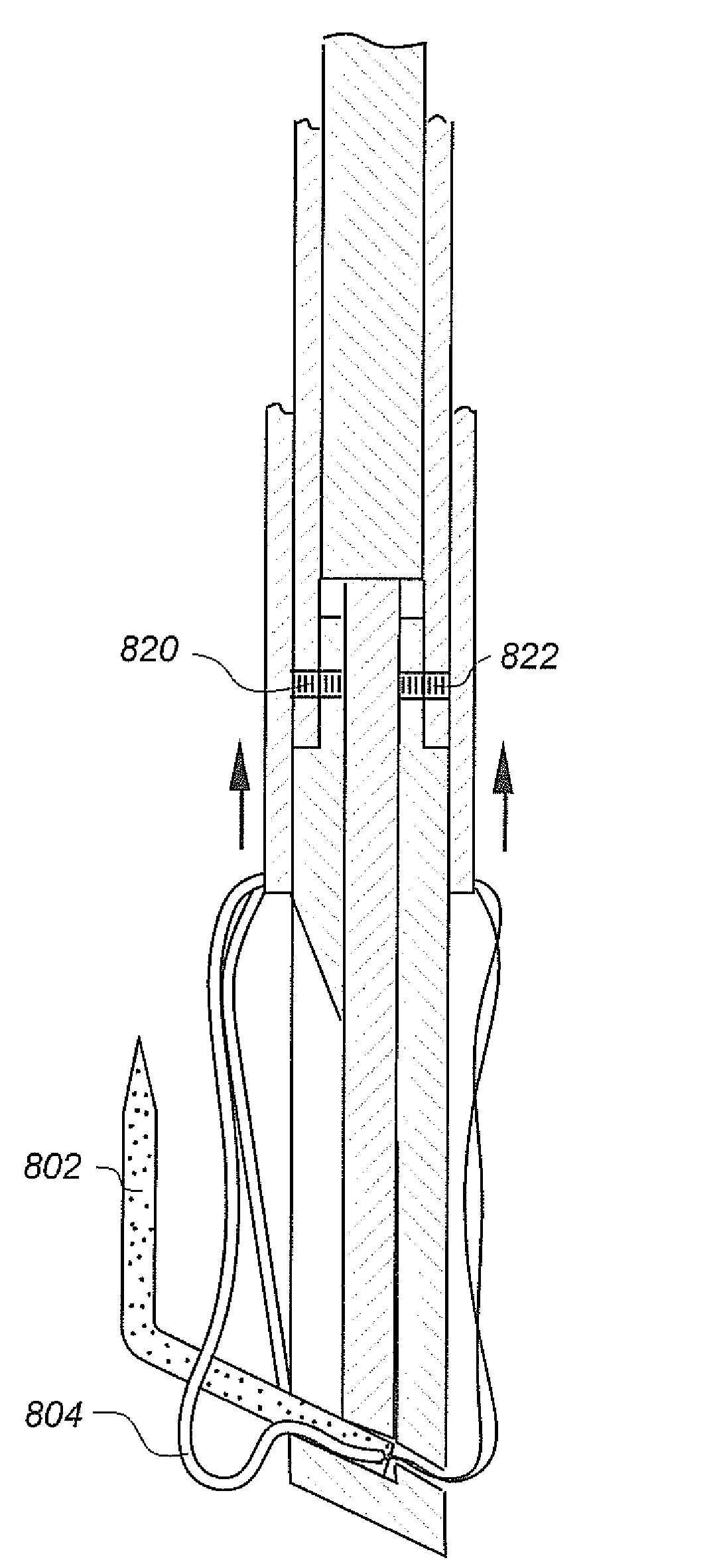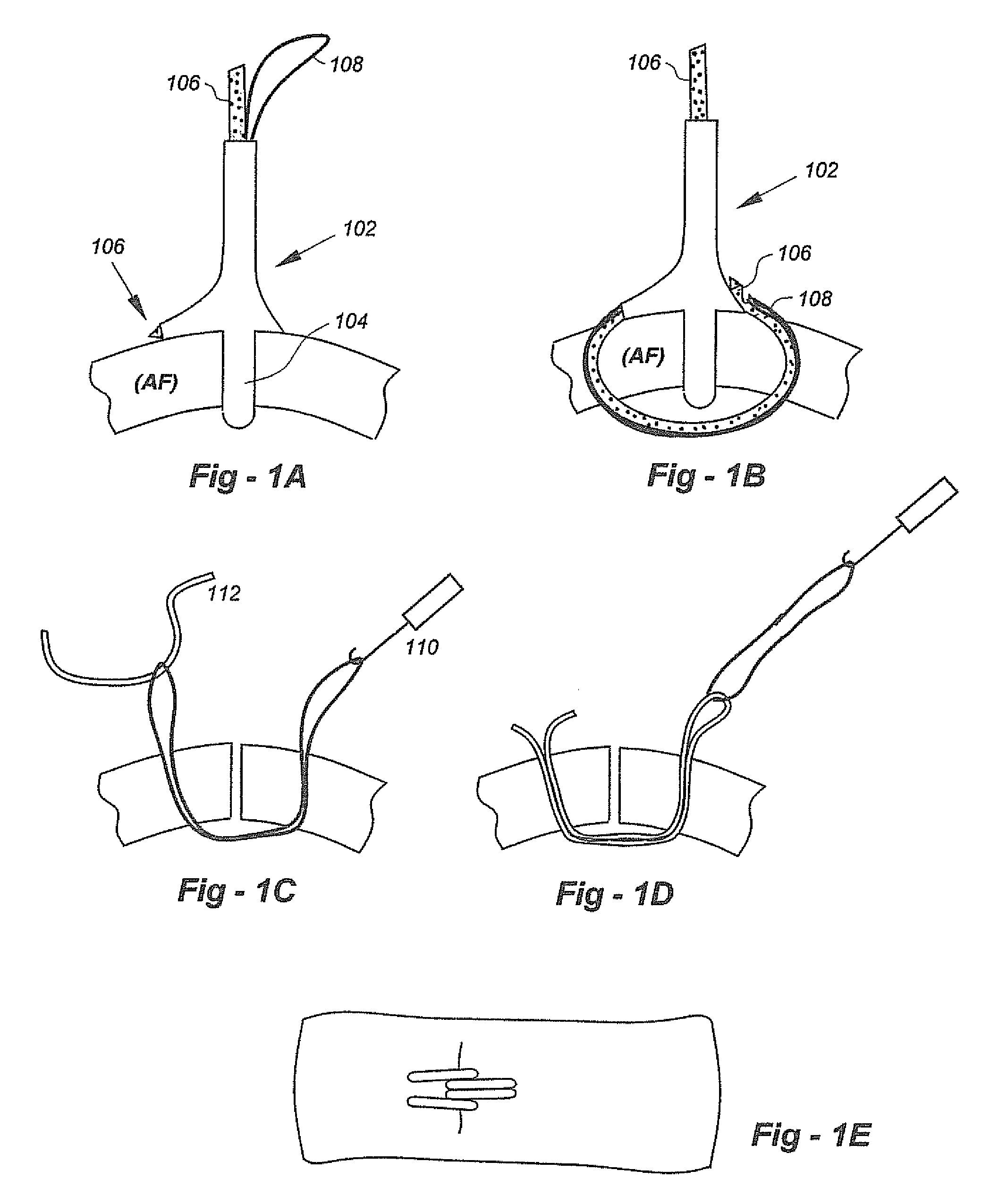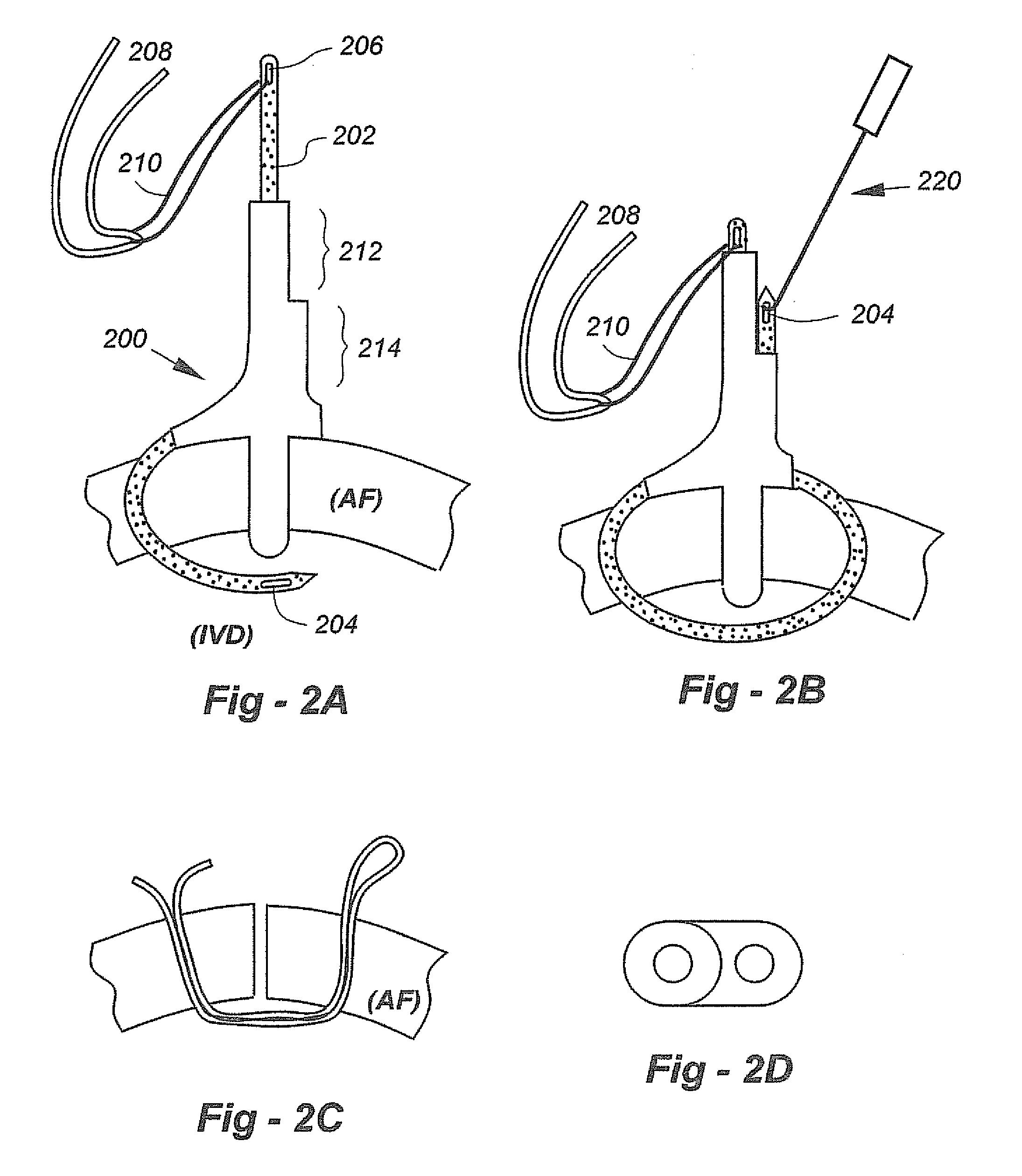Soft tissue repair methods and apparatus
a soft tissue and apparatus technology, applied in the field of soft tissue repair, can solve the problems of reducing the efficiency of disc degeneration surgery, so as to facilitate reconstruction, repair, and the closure of apertures, and prevent recurrent herniation
- Summary
- Abstract
- Description
- Claims
- Application Information
AI Technical Summary
Benefits of technology
Problems solved by technology
Method used
Image
Examples
Embodiment Construction
[0182]FIG. 1A is a lateral view of an alternative embodiment of the invention drawn in FIG. 15A of my co-pending patent application U.S. Ser. No. 61 / 300,993, the entire content of which is incorporated herein by reference, and a superior view of an axial cross section of a portion of the anulus fibrosus (AF). The distal end 104 of a cannulated instrument 102, which positions and stabilizes the instrument, is seen extending through an aperture in the AF. A needle 106 made of shape memory material, such as Nitinol, and a wire loop 108 pass through the cannulated instrument.
[0183]FIG. 1B is a lateral view of the embodiment of the invention drawn in FIG. 1A and a superior view of an axial cross section of a portion of the AF. The distal end of needle and one end of the wire loop were advanced through the cannulated instrument and the AF. The wire loop is captured in a hook-like feature in the needle. The painted end of the needle rides along a recess on the right side of the instrument....
PUM
| Property | Measurement | Unit |
|---|---|---|
| angle | aaaaa | aaaaa |
| water content | aaaaa | aaaaa |
| water content | aaaaa | aaaaa |
Abstract
Description
Claims
Application Information
 Login to View More
Login to View More - R&D
- Intellectual Property
- Life Sciences
- Materials
- Tech Scout
- Unparalleled Data Quality
- Higher Quality Content
- 60% Fewer Hallucinations
Browse by: Latest US Patents, China's latest patents, Technical Efficacy Thesaurus, Application Domain, Technology Topic, Popular Technical Reports.
© 2025 PatSnap. All rights reserved.Legal|Privacy policy|Modern Slavery Act Transparency Statement|Sitemap|About US| Contact US: help@patsnap.com



